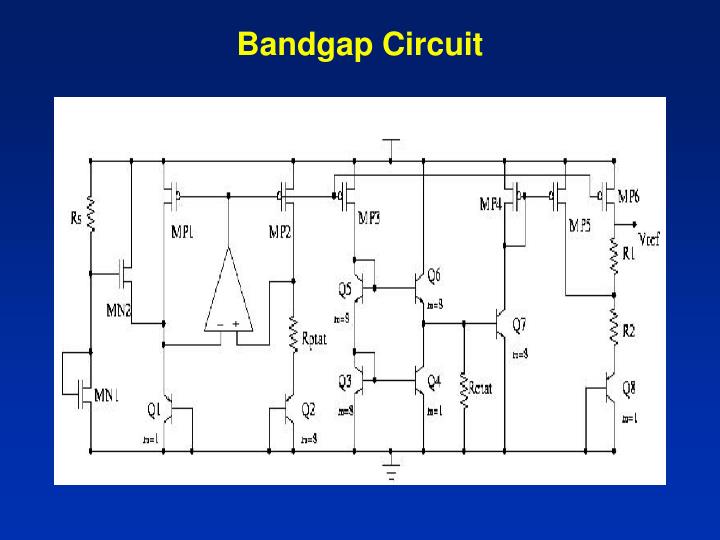


I don't have too many good things to say about this architecture at 3.3V! Mismatch performance is poor, Stability at the working region is poorer than it is at zero-state. It's a big mess if the strong start-up circuit is not put to sleep properly (It affects noise, stability, PSRR and curvature).

You may have to do a stb analysis to find out the loop gain(as the amp is on, this will be more) and the start-up circuit must be able to overpower it in all cases. If it fails to start-up you may have more trouble with a PMOS input than with a NMOS input stage. Test for start-up at low supply(constant), Slow, Cold after forcing all the transistor off by initial conditions and then try with small mismatch voltages in both directions.
Low startup time bandgap reference portable#
Regarding the generators, the de- mand for the low-power and low-voltage operation is strongly increasing the spread of battery-operated portable applications. At zero current, there is no reason to believe that the amp will move itself out of the zero state when it is comfortable there (Unless ofcourse your amp implementation avoids output close to vcc., It may still depend on the delay and slope of the external bias) The bandgap reference (BGR) is one of the most popular reference voltage generators that successfully achieve the requirements 1. The stable state is the state where the two currents are equal and the two amp voltages are equal. I don't think this circuit can start-up by itself even if the amp is PMOS input and you have external bias current.


 0 kommentar(er)
0 kommentar(er)
